Mengdao Xing
A Deep Learning-Based Supervised Transfer Learning Framework for DOA Estimation with Array Imperfections
Apr 18, 2025Abstract:In practical scenarios, processes such as sensor design, manufacturing, and installation will introduce certain errors. Furthermore, mutual interference occurs when the sensors receive signals. These defects in array systems are referred to as array imperfections, which can significantly degrade the performance of Direction of Arrival (DOA) estimation. In this study, we propose a deep-learning based transfer learning approach, which effectively mitigates the degradation of deep-learning based DOA estimation performance caused by array imperfections. In the proposed approach, we highlight three major contributions. First, we propose a Vision Transformer (ViT) based method for DOA estimation, which achieves excellent performance in scenarios with low signal-to-noise ratios (SNR) and limited snapshots. Second, we introduce a transfer learning framework that extends deep learning models from ideal simulation scenarios to complex real-world scenarios with array imperfections. By leveraging prior knowledge from ideal simulation data, the proposed transfer learning framework significantly improves deep learning-based DOA estimation performance in the presence of array imperfections, without the need for extensive real-world data. Finally, we incorporate visualization and evaluation metrics to assess the performance of DOA estimation algorithms, which allow for a more thorough evaluation of algorithms and further validate the proposed method. Our code can be accessed at https://github.com/zzb-nice/DOA_est_Master.
Robust Blind Source Separation by Soft Decision-Directed Non-Unitary Joint Diagonalization
Jun 28, 2021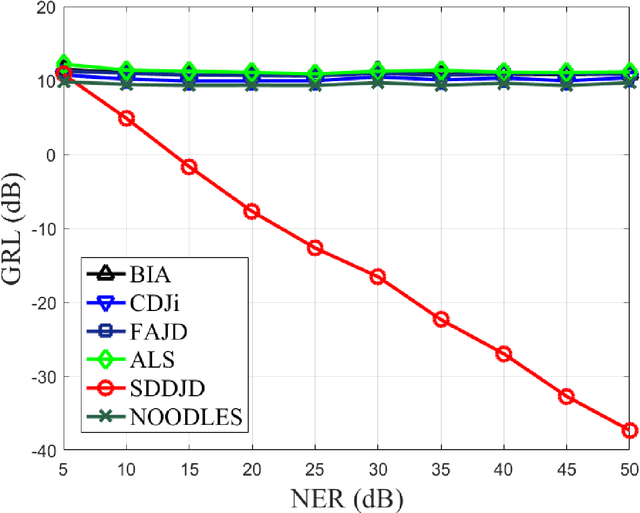
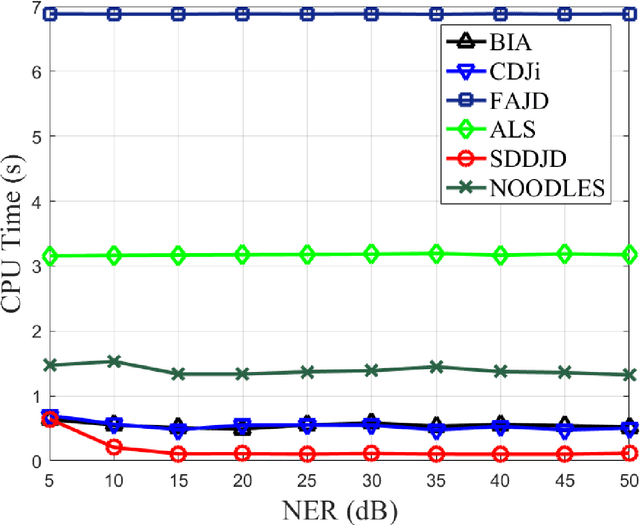
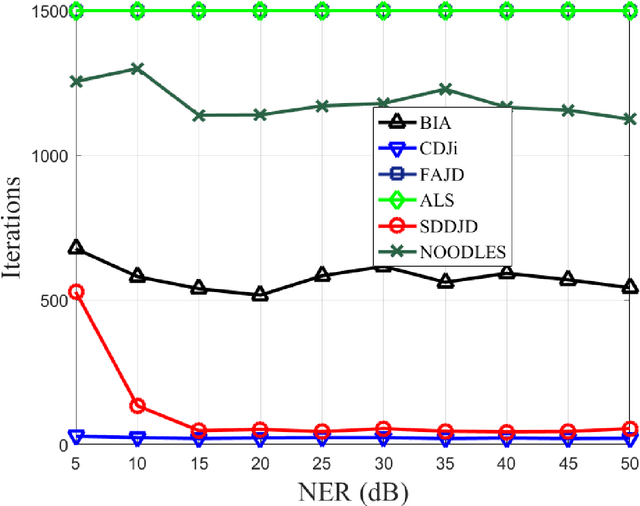
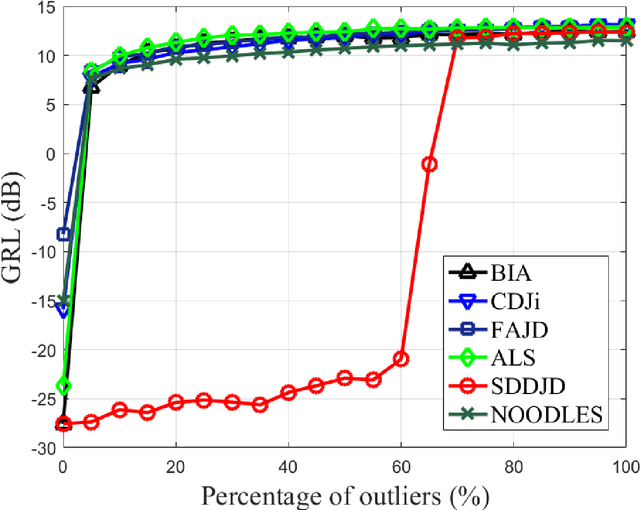
Abstract:Approximate joint diagonalization of a set of matrices provides a powerful framework for numerous statistical signal processing applications. For non-unitary joint diagonalization (NUJD) based on the least-squares (LS) criterion, outliers, also referred to as anomaly or discordant observations, have a negative influence on the performance, since squaring the residuals magnifies the effects of them. To solve this problem, we propose a novel cost function that incorporates the soft decision-directed scheme into the least-squares algorithm and develops an efficient algorithm. The influence of the outliers is mitigated by applying decision-directed weights which are associated with the residual error at each iterative step. Specifically, the mixing matrix is estimated by a modified stationary point method, in which the updating direction is determined based on the linear approximation to the gradient function. Simulation results demonstrate that the proposed algorithm outperforms conventional non-unitary diagonalization algorithms in terms of both convergence performance and robustness to outliers.
Granular Computing: An Augmented Scheme of Degranulation Through a Modified Partition Matrix
Apr 03, 2020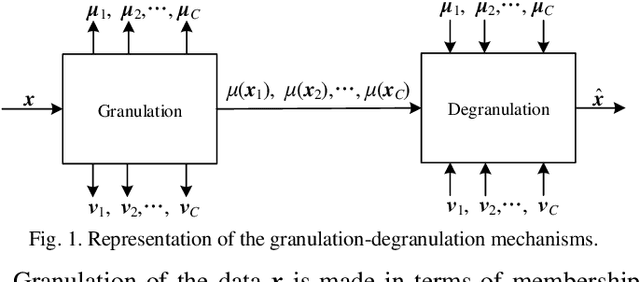
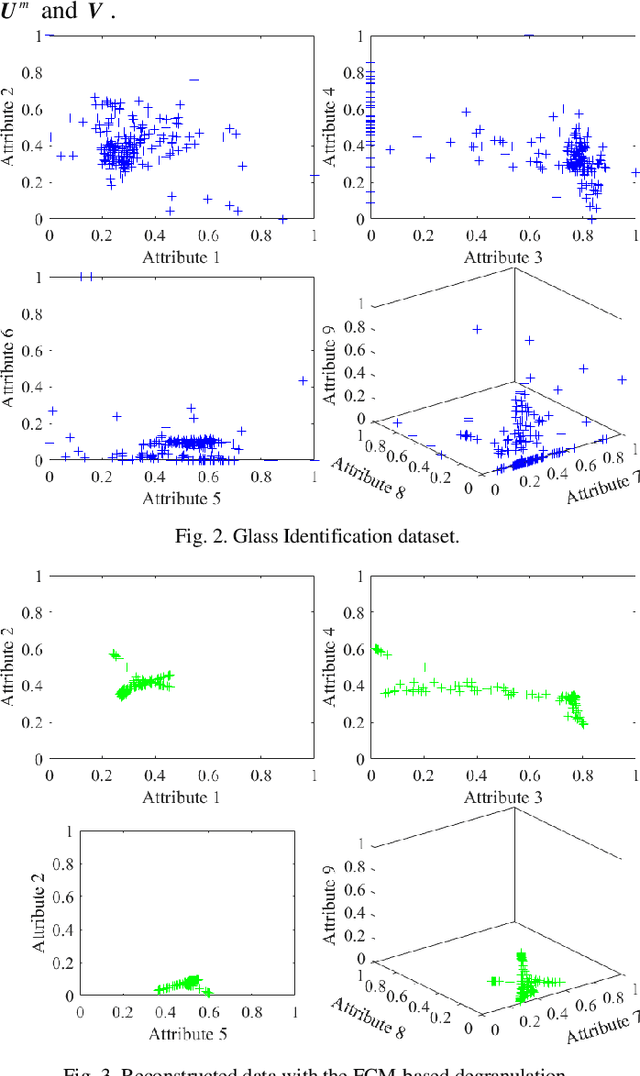
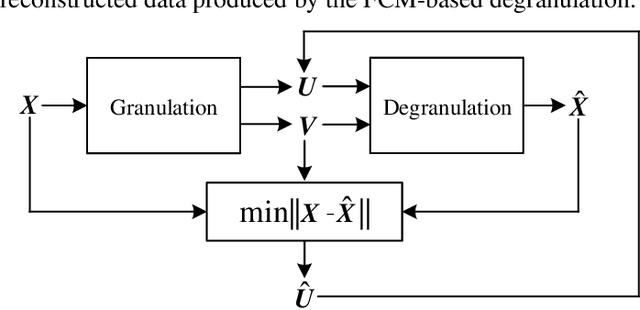
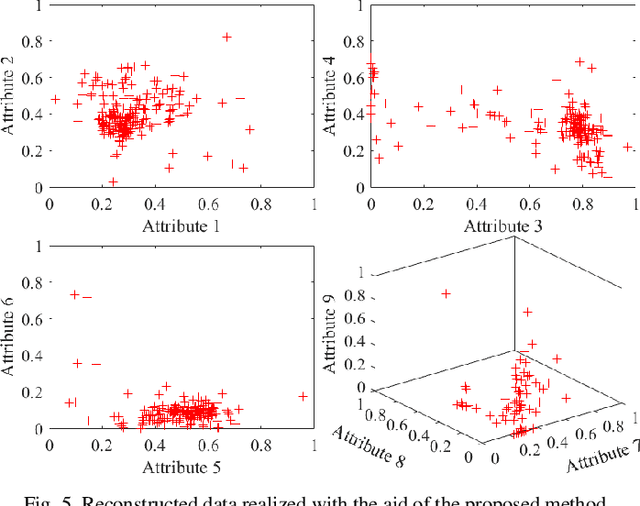
Abstract:As an important technology in artificial intelligence Granular Computing (GrC) has emerged as a new multi-disciplinary paradigm and received much attention in recent years. Information granules forming an abstract and efficient characterization of large volumes of numeric data have been considered as the fundamental constructs of GrC. By generating prototypes and partition matrix, fuzzy clustering is a commonly encountered way of information granulation. Degranulation involves data reconstruction completed on a basis of the granular representatives. Previous studies have shown that there is a relationship between the reconstruction error and the performance of the granulation process. Typically, the lower the degranulation error is, the better performance of granulation is. However, the existing methods of degranulation usually cannot restore the original numeric data, which is one of the important reasons behind the occurrence of the reconstruction error. To enhance the quality of degranulation, in this study, we develop an augmented scheme through modifying the partition matrix. By proposing the augmented scheme, we dwell on a novel collection of granulation-degranulation mechanisms. In the constructed approach, the prototypes can be expressed as the product of the dataset matrix and the partition matrix. Then, in the degranulation process, the reconstructed numeric data can be decomposed into the product of the partition matrix and the matrix of prototypes. Both the granulation and degranulation are regarded as generalized rotation between the data subspace and the prototype subspace with the partition matrix and the fuzzification factor. By modifying the partition matrix, the new partition matrix is constructed through a series of matrix operations. We offer a thorough analysis of the developed scheme. The experimental results are in agreement with the underlying conceptual framework
A Review on InSAR Phase Denoising
Jan 03, 2020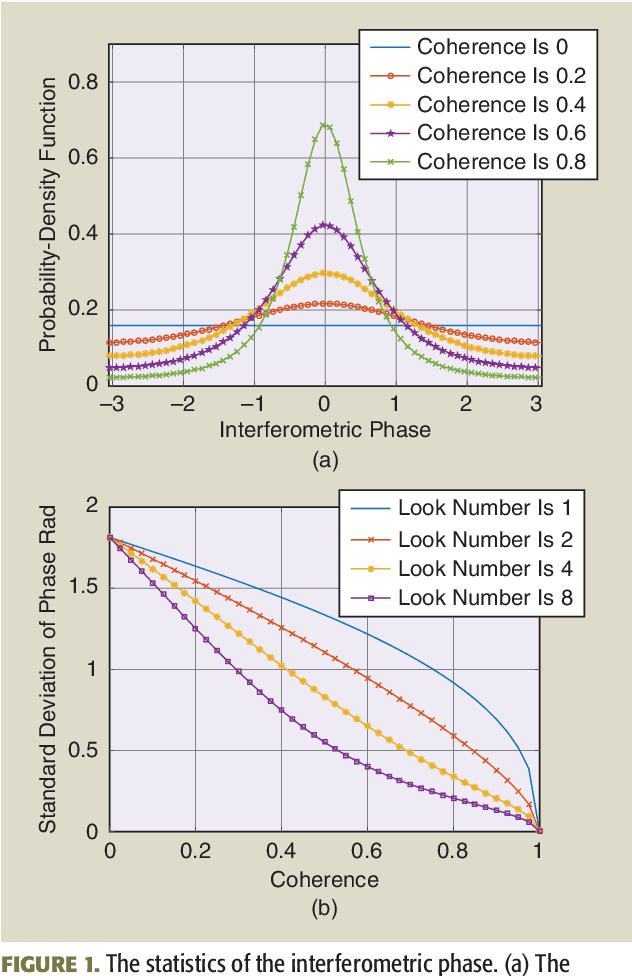
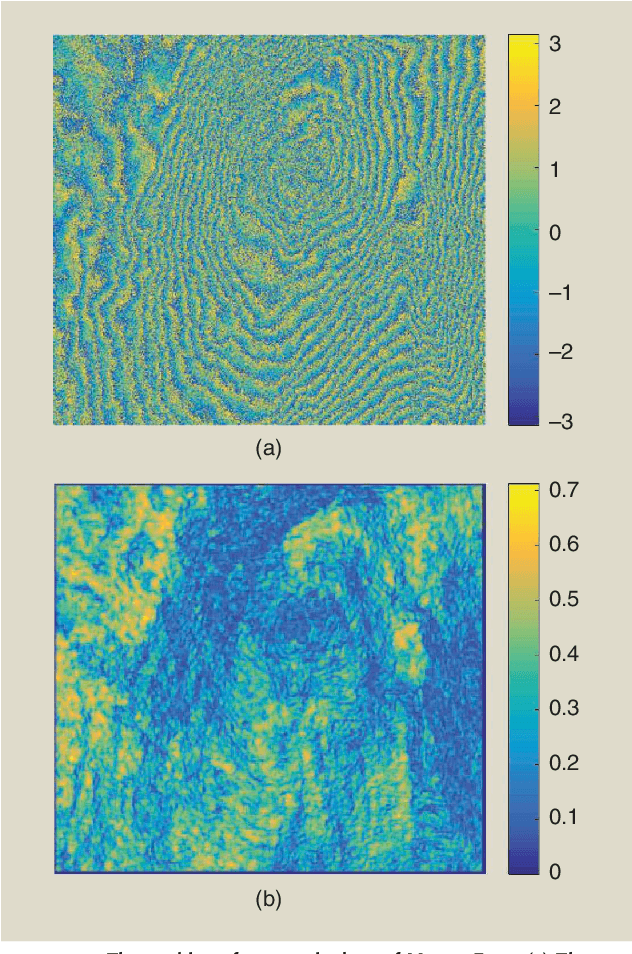
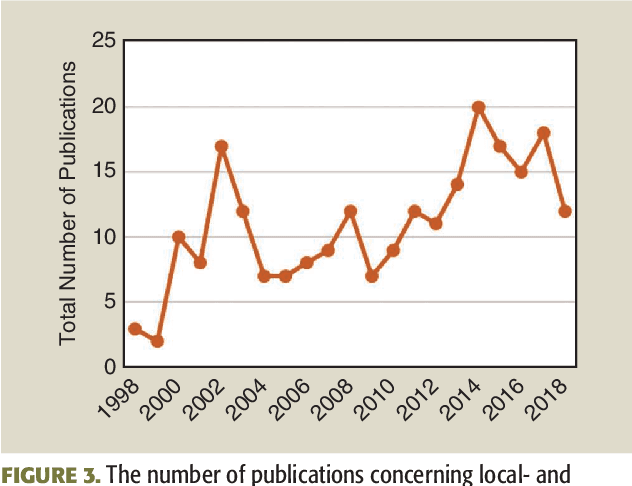
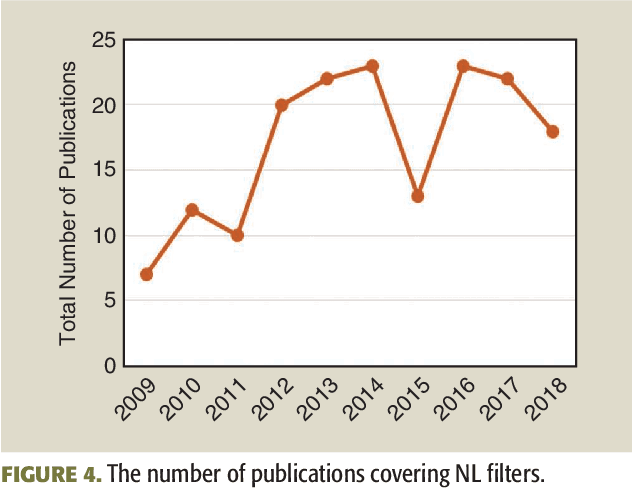
Abstract:Nowadays, interferometric synthetic aperture radar (InSAR) has been a powerful tool in remote sensing by enhancing the information acquisition. During the InSAR processing, phase denoising of interferogram is a mandatory step for topography mapping and deformation monitoring. Over the last three decades, a large number of effective algorithms have been developed to do efforts on this topic. In this paper, we give a comprehensive overview of InSAR phase denoising methods, classifying the established and emerging algorithms into four main categories. The first two parts refer to the categories of traditional local filters and transformed-domain filters, respectively. The third part focuses on the category of nonlocal (NL) filters, considering their outstanding performances. Latter, some advanced methods based on new concept of signal processing are also introduced to show their potentials in this field. Moreover, several popular phase denoising methods are illustrated and compared by performing the numerical experiments using both simulated and measured data. The purpose of this paper is intended to provide necessary guideline and inspiration to related researchers by promoting the architecture development of InSAR signal processing.
 Add to Chrome
Add to Chrome Add to Firefox
Add to Firefox Add to Edge
Add to Edge